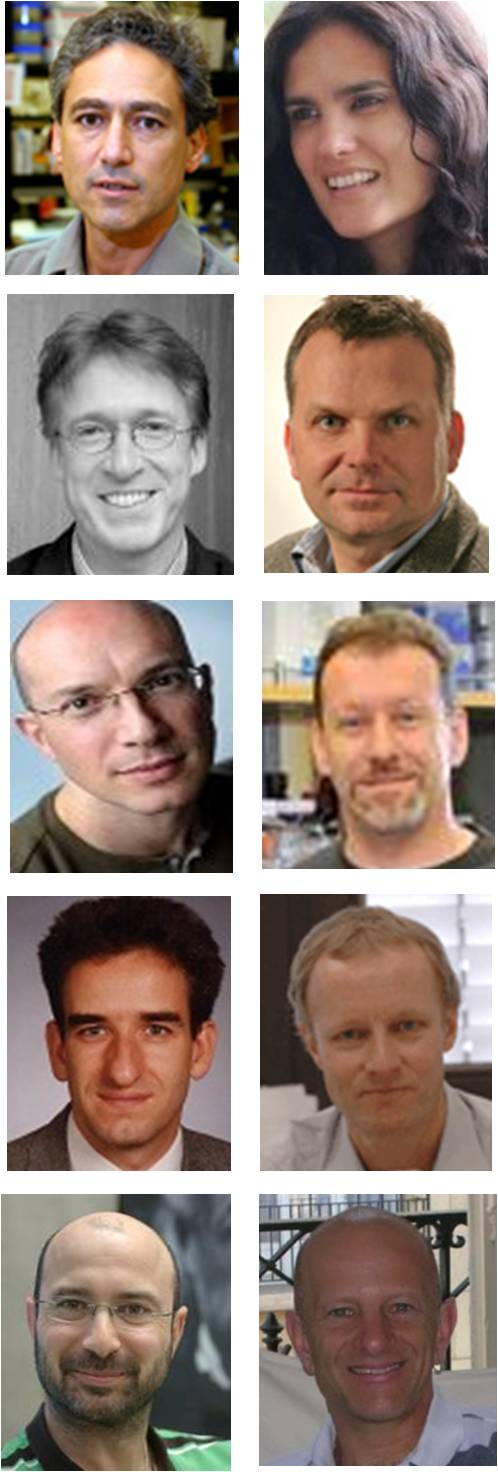Collaborations
Prof. Dr. Susanne Alban (Kiel University)
-
Designed copolymers for quantitative detection of heparin in serum
Prof. Dr. Gal Bitan and Prof. Dr. Jeff Bronstein (University of California at Los Angeles, USA)
- Prevention of pathological protein aggregation with supramolecular tools: Alzheimer’s disease, Parkinson’s disease, Diabetes mellitus II
Dr. Peter Crowley (National University of Ireland, Galway)
- Structural elucidation of complexes between proteins and molecular tweezers with NMR spectroscopy and X-ray crystallography
Prof. Dr. Matthias Epple, Dr. Viktoriya Sokolova (Duisburg-Essen University)
- Nanoparticles as transport vehicle for supramolecular drugs across cell membranes
Prof. Dr. Markus Gerhards (Kaiserslautern University)
- Spectroscopical characterization of ß-sheet models in the molecular beam (R2PI)
Prof. Dr. Herbert de Groot, Prof. Dr. Michael Kirsch (Duisburg-Essen University)
- Control over enzymatic activity by molecular clips, tweezers and affinity polymers
Prof. Dr. Raz Jelinek (Ben Gurion University, Beer-Sheva, Israel)
- Sensor materials via embedding of specific amphiphilic receptor molecules in chromatic vesicles and films
Prof. Dr. Arno Kraft (Heriot-Watt University Edinburgh, Scotland, UK)
- Living polymerization techniques for the construction of protein-selective materials
Prof. Dr. Jan Münch (Ulm University clinics)
- Inhibition of HIV infectiosity by SEVI complexation with molecular tweezers
Prof. Dr. Christian Ochsenfeld (LMU München)
- Ab initio calculation of NMR chemical shifts for complexes between biomolecules and designed supramolecular ligands
Prof. Dr. Christian Ottmann (Technical University Eindhoven)
- 14-3-3 Proteins and molecular tweezers
Dr. Ivo Piantanida und Dr. Marijeta Kralj (Ruđer Bošković Institute, Zagreb, Croatia)
- Biological effects of diverse calixarene ligands on cell cycle and membrane stability
Dr. Elsa Sanchez-Garcia (MPI for charcoal research, Mülheim)
- QM/MM and MD simulations for protein interactions with molecular tweezers
Prof. Dr. Carsten Schmuck (Duisburg-Essen University)
- Development of an artificial RGD binder
Prof. Dr. Börje Sellergren (Malmö University, Sweden)
- Molecularly imprinted affinity materials for proteins
Prof. Dr. Heinrich Sticht (Erlangen-Nürnberg University)
- University
Prof. Dr. Mathias Ulbricht (Duisburg-Essen University)
- Membrane absorbers for Proteins
Prof. Dr. Dieter Willbold and Prof. Dr. Carsten Korth (Düsseldorf University)
- Aminopyrazole-D-peptide hybrids against pathological aggregation of the Alzheimer’s peptide

